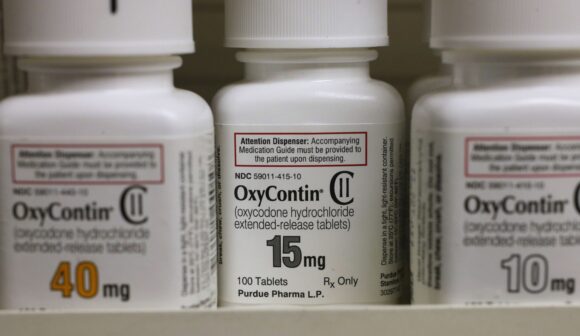A federal judge’s decision to unravel a settlement shielding members of the Sackler family from future opioid litigation could upend a controversial corner of U.S. bankruptcy law: protecting third parties who have not filed for Chapter 11 themselves.
In a written opinion late Thursday, U.S. District Judge Colleen McMahon said federal law did “not authorize” so-called nondebtor releases granted in September to Sackler family members in the court restructuring of their company, OxyContin maker Purdue Pharma LP.
Whether such releases are allowed represented the “great unsettled question” of the case, which had split federal appeals courts for decades, McMahon said.
Companies or individuals filing for bankruptcy are entitled to protections against creditors, including plaintiffs suing them, while they attempt to reorganize.
Judges increasingly over the years have shielded nondebtors with releases when approving a reorganization plan, especially when those third parties contribute money to the restructuring.
Indeed, absent releases, the Sacklers threatened to withdraw their $4.5 billion contribution to Purdue’s reorganization — a settlement aimed at resolving thousands of opioid lawsuits by steering money to U.S. communities reeling from the epidemic.
“This, if it stands, will completely upend Chapter 11 practice,” said Lindsey Simon, an assistant law professor at the University of Georgia’s law school. “It effectively takes nondebtor releases off the table.”
Washington state Attorney General Bob Ferguson, among those who had objected to Purdue’s reorganization, said on Thursday he was prepared to eventually take his argument to the U.S. Supreme Court.
Purdue late Thursday said it would appeal McMahon’s ruling. On Friday, the company said nondebtor releases have “long been allowed under the law in most jurisdictions … because they have long played a critical role in the successful resolution of mass tort bankruptcies in the United States.”
Sackler representatives declined to comment or did not immediately respond to a request.
Boy Scouts and USA Gymnastics
Such releases, or the potential for their use, have sparked controversy not only in the Purdue case, but bankruptcy proceedings arising from litigation over sexual abuse involving the Boy Scouts and former USA Gymnastics doctor Larry Nassar.
Members of the bankruptcy bar who favor the releases contend they facilitate complex settlements, encouraging otherwise reluctant third parties to contribute funds toward reorganizations that rehabilitate businesses or resolve widespread litigation.
Critics argue the releases allow rich and powerful companies, directors, executives and investors to latch onto a bankruptcy case and extinguish their legal liability without subjecting themselves to their own Chapter 11 filing.
Congress designed bankruptcy filings for debtors facing crushing liabilities, not defendants seeking an end run around trial courts and juries, according to some legal experts.
In October, Johnson & Johnson Inc created a company to shoulder liabilities from 38,000 lawsuits alleging talc in its iconic Baby Powder contained asbestos and caused cancer. The subsidiary then filed for bankruptcy.
In what is often a precursor to third parties obtaining nondebtor releases, a judge granted an injunction halting litigation not only against the company under bankruptcy protection but also J&J, which did not file for Chapter 11.
J&J maintains its consumer talc products are safe and confirmed through thousands of tests to be asbestos-free.
Federal appeals courts over the years have issued conflicting decisions on whether such releases are allowed, with extra attention paid to whether they are being granted without permission from creditors.
McMahon, in her decision overturning Purdue’s bankruptcy plan, lamented a 2005 2nd U.S. Circuit Court of Appeals opinion that urged nondebtor releases be granted sparingly in unique cases because they are ripe for abuse.
“This will no longer do,” McMahon said, noting the appeals court questioned whether bankruptcy law allows the releases. “Either statutory authority exists or it does not.” She said the Bankruptcy Code only allows nondebtor releases over creditor objections in cases arising from asbestos exposure.
In 1994, Congress authorized nondebtor releases specifically to help companies faced with monumental asbestos liabilities. Under the law, insurers would contribute to a trust to pay claims from people dying of mesothelioma and other asbestos-related illnesses.
In return, those insurers received nondebtor releases to prevent asbestos victims from turning around and suing them after collecting from the trust.
McMahon Opinion
In her ruling, McMahon said Congress never authorized the release mechanism beyond that circumstance.
More than 95% of Purdue’s 120,000-plus voting creditors approved the company’s reorganization, including 43 states and territories, the company has said.
Those objecting to Purdue’s plan included eight states, and more than 2,600 personal injury claimants, McMahon said. The U.S. Justice Department’s bankruptcy watchdog and the U.S. attorney’s office in Manhattan also objected.
Democratic lawmakers have introduced legislation that would all but ban nondebtor releases, and further restrict the ability of third parties to have litigation against them halted while a debtor’s bankruptcy is pending.
“The Sacklers must not be permitted to evade accountability by abusing our bankruptcy system, and I applaud the District Court for recognizing what I’ve long believed — that nonconsensual third-party releases are not only immoral and unjust, but also illegal,” House Oversight Chairwoman Caroyln Maloney, among the legislation’s backers, said in a statement late Thursday.
U.S. Attorney General Merrick Garland late Thursday also applauded McMahon’s decision to overturn the Purdue plan.
(Reporting by Mike Spector in New York and Dan Levine in San Francisco; Editing by Amy Stevens and Jonathan Oatis)
Was this article valuable?
Here are more articles you may enjoy.



 Adjusters Launch ‘CarFax for Insurance Claims’ to Vet Carriers’ Damage Estimates
Adjusters Launch ‘CarFax for Insurance Claims’ to Vet Carriers’ Damage Estimates  Nearly Half of 100 Largest P/C Insurers Destroy Value: ACORD
Nearly Half of 100 Largest P/C Insurers Destroy Value: ACORD  Georgia Republicans Move to Scrap State Income Tax by 2032 Despite Concerns
Georgia Republicans Move to Scrap State Income Tax by 2032 Despite Concerns  Good Times for US P/C Insurers May Not Last; Auto Challenges Ahead
Good Times for US P/C Insurers May Not Last; Auto Challenges Ahead 

